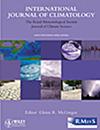Challenges in Predicting Yangtze River Basin Summer Temperatures: The Role of Atmospheric Circulation and Tropical SST Forcing
Abstract
The densely populated and economically crucial Yangtze River Basin (YRB) in China has experienced an increasing trend of high-temperature events during recent summers, highlighting the importance of skillful seasonal prediction for effective mitigation and adaptation. However, the sources of predictability and origins of prediction errors for YRB summer temperatures remain poorly understood. This study investigates the predictability of YRB summer (July–August) temperatures using hindcasts from three state-of-the-art dynamical climate models to better understand these sources. While all models demonstrate some skill at a 0-month lead, this capability becomes severely limited at lead times of 1 month or longer. Analysis of the models' ability to simulate the driving physical mechanisms reveals that while they reasonably capture the observed relationship between YRB summer temperatures and the associated local atmospheric circulation pattern linked to a Eurasian mid-to-high latitude wave train, significant uncertainties in predicting this wave train itself constrain overall skill. Furthermore, observational evidence shows a significant out-of-phase relationship between YRB summer temperatures and concurrent sea surface temperature (SST) anomalies in the equatorial central–eastern Pacific, a relationship that the models fail to reproduce. This failure stems from varying model biases in simulating the atmospheric circulation response to equatorial Pacific SST forcing, hindering their ability to capture the Pacific–YRB teleconnection. Therefore, deficiencies in simulating both the Eurasian circulation and the tropical Pacific forcing significantly contribute to the limited seasonal prediction skill for YRB summer temperatures, underscoring the need for improved representation of mid-latitude dynamics, tropical air–sea interactions and associated atmospheric teleconnections in dynamical models.


 求助内容:
求助内容: 应助结果提醒方式:
应助结果提醒方式:


